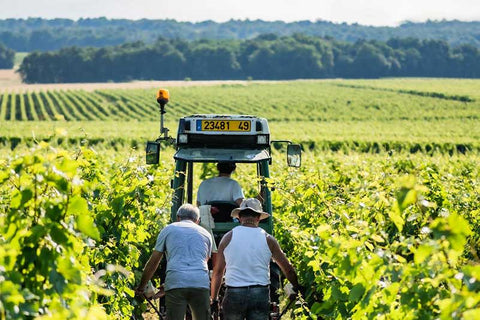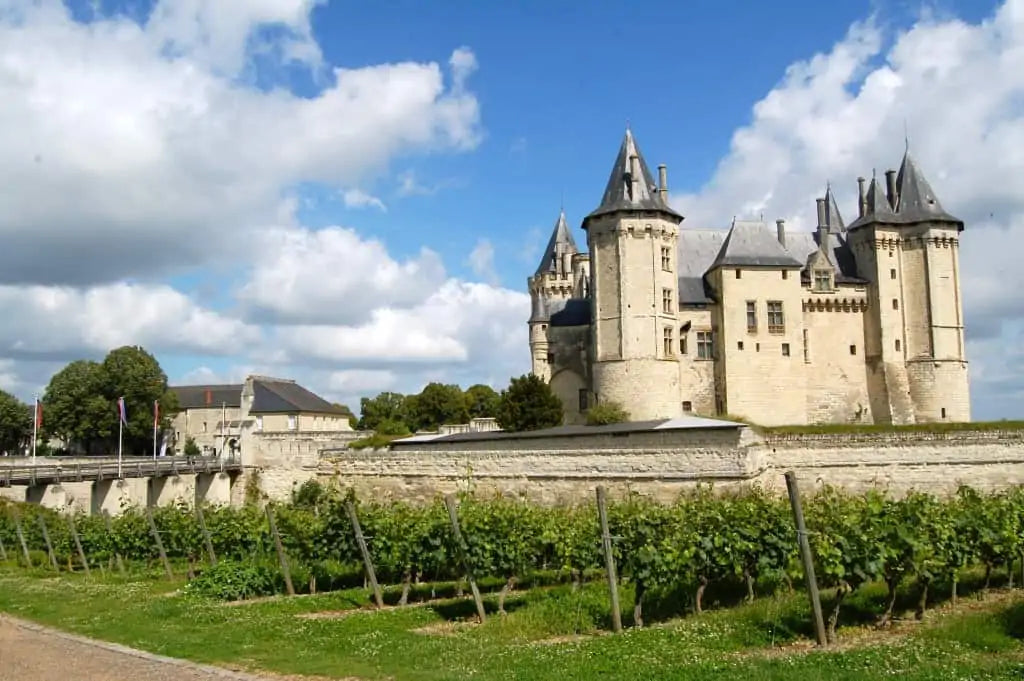
Due to the extreme rarity of its wines—and the fact that its pure Cabernet Francs may be the world’s greatest—Clos Rougeard has become the Loire Valley’s ultimate cult producer.
Its red trophies, Poyeux and Bourg, are now among the world’s most coveted wines, while its towering white, Brézé, is nearly as ardently sought after. Not only do they come from three of the most extraordinary terroirs in France; they represent the winemaking of two brothers who are among France’s most gifted, Nady and Charly Foucault.
But with the passing of Charly in December, 2015, and the subsequent sale of the domaine two years later, the eight-generation-old Foucault family domaine in Saumur came to an end. And the wines have become scarce to the point of being virtually unobtainable.
Reverence for Tradition

Clos Rougeard stands alone, despite the fact that Nady and Charly have inspired and groomed several potential heirs. These include Romain Guiberteau, Thierry Germaine’s Domaine de Roches Neuves and Charly’s son Antoine Foucault’s Domaine du Collier
The Foucault brother’s wines belong to that rare group that isn’t just the best of their type, but transcendent of it, endowed with that rare and magical sense of extra dimension found only in the greatest wines. They are the Loire as Brune Giacosa was to the Langhe and Henri Jayer to Burgundy.
The brothers consistently achieved this through an approach little changed from that of their predecessors. Charly and Nady’s grandfather had trademarked the Clos Rougeard name and was bottling his own production more than a century ago, at a time when most of their contemporaries were selling in barrel.
And what went into those bottles set Clos Rougeard apart as well. Well aware of their vineyards’ greatness, the Foucault family has long made classic vins de garde, with the ability to develop gracefully for decades in bottle.
The Iconic Reds
The Clos Rougeard Cabernet Franc vineyards are located in the heart of Saumur’s tuffeau plateau, a deep bed of limestone overlain with different topsoils. In contrast, the estate’s Chenin Blanc vines in Bréze are on limestone-clay marls, long regarded as ideal for Saumur blanc.

From their Cabernet Franc terroirs, the Foucaults made three cuvées, beginning with the blended Le Clos bottling, sourced from 50-to-70-year-old vines in the villages of Chacé, Varrains and Dampierre. Next is Les Poyeaux, half-century-old vines in a south-facing parcel of eroded sandstone over tuffeau, adjacent to the deep cellar in their home village of Chacé.
Finally, the iconic Le Bourg is from vines averaging 80 years old, planted on a thin layer of clay over a deep bed of tuffeau, also in Chacé. The combination of vine age and richer soil makes this the most powerfully structured wine in Clos Rougeard’s array.
All three reds are made based on an approach championed by generations of Foucault. It as Nady Foucault has famously been quoted: “The only revolution at Clos Rougeard is that we have not changed anything!”
The reds all undergo a 4- to 6-week native yeast fermentation and maceration in open top cement vats, with gently extraction. This is followed by 18- to 24-months aging in small barrels, which according Nady has long been the tradition in Saumur. Key to their deep yet elegantly textured character is the exclusion of the press wine, which was always sold off.
The character of each of the red wines determines both their length of barrel aging, and the use of new oak. The barrels are all neutral for Le Clos; one year old for Poyeaux, and new for the powerfully rich Le Bourg.
The Magical Brézé

Rougeard’s mythic white is made from Chenin Blanc grown in the hallowed Saumur Blanc terroir of Brézé, a unique slope of sandy clay and limestone. Curnonsky—France’s most celebrated 20th century gastronomic writer—considered Brézé the rival of the great Chardonnay vineyards of Burgundy.
Here, the Foucault brothers tended their 60+year-old Chenin Blanc vines organically, just as their ancestors had all of the domaine’s vines, long before it became trendy to do so. And they always allowed the Brézé cuvée’s style to be determined by the vintage, which for the versatile Chenin Blanc in the central Loire could be Sec, Demi-Sec and even Moelleux, depending on the growing season. Aged in 20% new barrels, and rarely finishing malolactic fermentation, Clos Rougeard Brézé is a uniquely complex and long-lived expression of its great terroir.
But the reverence accorded Clos Rougeard has created great scarcity for all the wines. Little was ever made, and most of it stayed in France, doled out to Michelin-starred restaurants and loyal private clients. Today, with Clos Rougeard fever at its zenith, and no new post-2016 vintages bearing the Foucault touch, the wines are more difficult to find than ever.




